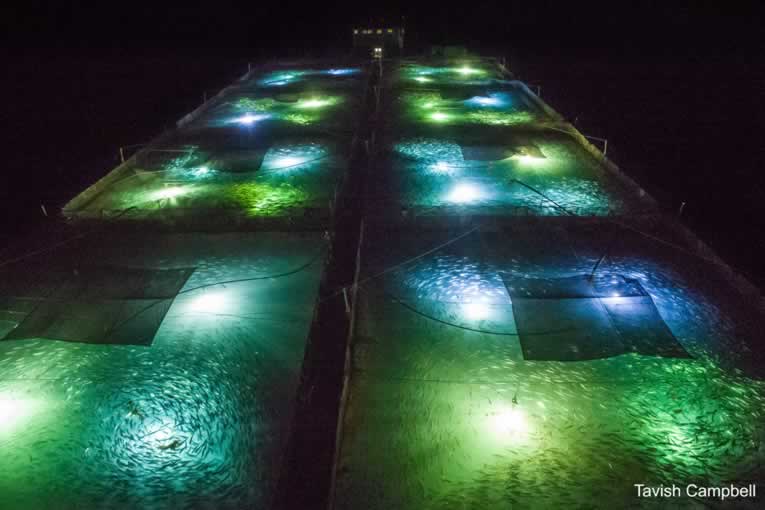Dr Amy Ellison
Senior Lecturer in Biological Sciences

Affiliations
Contact info
- Name
- Dr Amy Ellison
- Position
- Lecturer in Biological Sciences
- a.ellison@bangor.ac.uk
- Phone
- +44(0)1248 388437
- Location
- School of Natural Sciences, Bangor University, Deiniol Road, Bangor, Gwynedd, LL57 2UW, UK
Contact Info
- Name
- Dr Amy Ellison
- Position
- Lecturer in Biological Sciences
- a.ellison@bangor.ac.uk
- Phone
- +44(0)1248 388437
- Location
- School of Natural Sciences, Bangor University, Deiniol Road, Bangor, Gwynedd, LL57 2UW, UK
Overview
About
I am a molecular parasitologist broadly interested in all aspects of host-pathogen interactions and co-evolution. I have a particular interest in how chronoparasitology – the study of circadian rhythms of hosts and parasites – can be used to improve our understanding of disease dynamics in captive and wild animal populations. In addition, I am interested in how next-generation sequencing (NGS) technologies can be used in the study of biotic and abiotic factors influencing species-specific differences in responses to shared pathogens.
Anthropogenic induced changes to wild species (e.g. climate change, habitat destruction/fragmentation, introduction of invasive species) and domesticated species (e.g. increased intensity of farming, farming in new geographic regions, global transportation) populations are leading to alterations of host exposure risks to both native and novel pathogens. Consequently, the dynamics of host-pathogen interactions are currently changing at unprecedented rates in both natural and domestic animal populations. Therefore, studying how host immunity, their microbiomes and parasites, and environment interact, is crucial to our understanding of altered pathogen transmission dynamics and its consequences on host species fitness. I believe in this flourishing era of high-throughput sequencing and bioinformatics, we are uniquely poised to tackle such questions at a new level of detail.
CV
Education
- 2012 PhD. Evolutionary genetics of the maintenance of mixed-mating systems. Aberystwyth University, UK.
- 2009 BSc. (Hons) Zoology (1st). Aberystwyth University, UK.
Career
- 2019 – Lecturer of Biological Sciences. Bangor University, UK.
- 2018 – 2021 BBSRC Future Leader Fellow, Cardiff & Bangor University, UK. FUTUREFISH: The role of circadian rhythms, immunity and infection in enhancing aquaculture
- 2015 – 2018 NRN-LCEE Ser Cymru Fellow, Cardiff University, UK. AquaWales: Minimising the impacts of intensive aquaculture in the face of climate change.
- 2012 – 2015 NSF Postdoctoral Research Associate, Cornell University, USA. Functional genomics of amphibian chytridiomycosis resistance.
Research
Chronobiology & Fish Health
Circadian rhythms are ubiquitous; from bacteria to plants and animals, all organisms exhibit daily behavioural, physiological, metabolic, and even microbiome cycles. This rhythmicity is regulated by pivotal sets of “clock genes” and in mammals, clock gene expression cycles drive daily variations in immune functions and disease susceptibility. Conversely, immune responses are recognized to alter clock gene expression. Stress responses (in particular altered glucocorticoid levels) can impact clock gene expression and, consequently, innate and adaptive immune responses. In humans, there is increasing recognition of the impact of circadian disruption (e.g. shift-work, jet-lag) on disease susceptibility and the potential to increase drug efficacy using time-of-day targeted treatments/vaccinations (“chronotherapy”). Temporal coordination of biological processes is not limited to free-living organisms; parasites also exhibit circadian rhythms in traits such as egg-laying or larval emergence. However, the extent to which these rhythms are entrained by host cues and/or the abiotic environment is poorly understood. Intriguingly, host-parasite circadian mismatch appears to be detrimental to parasite fitness. Therefore, the integration of chronobiology into current animal health and disease research frameworks is essential for advancing holobiont approaches to health.

In aquaculture, the world’s fastest-growing food sector, infectious disease is the principal barrier to economic and ecological sustainability. Disease outbreaks result in ~US$6 billion loss per year globally and account for annual losses up to 16.5% in the UK. Antibiotic-supplemented feeds are increasingly relied upon to mitigate disease despite concerns for their contribution to emerging antimicrobial resistance in aquatic environments. Intensive indoor aquaculture is heralded as the future of sustainable fish farming, in which the fish’s environment (e.g. light, temperature, feeding) and reproduction is finely tuned to maximise growth and productivity, without impacting natural ecosystems via waste, chemical treatments and escapes. Manipulated photoperiods – particularly extended day length for diurnal species – are currently promoted to improve juvenile rearing quality in many fish species. In the extreme, constant light is used to maximize somatic growth and delay maturation. Despite an increasing awareness of the intricate interaction between circadian gene expression and immune functions in mammals, how this corresponds to current disease issues in captive fish populations is unknown. However, our preliminary data suggests parasitic infections alter fish daily behaviour patterns and dysregulate clock gene expression. Moreover, while time-of-day targeted treatments of disease and cancer in humans appear to have exciting potential, this has yet to be translated to animal health practice and, more fundamentally, the molecular control of circadian rhythmicity in parasites remains relatively unknown. My group is addressing these key knowledge gaps; investigating how light and feeding regimes, and circadian rhythms of fish, their parasites and microbiota, interact to impact on health and disease susceptibility. This work is funded by the BBSRC and Cefas Seafood Innovation Fund, and supported by a KESS2 studentship to Simon Baumgartner.
Light pollution & aquatic animal health
For marine intertidal organisms, circadian and circalunar clocks orchestrate development, orientation, reproduction, migration and other key life events. Skyglow – artificial light scattered in the atmosphere and reflected back to ground over kilometres – now covers 22% of the world’s coastal regions, the ecological impacts of which are largely unknown. Skyglow can interfere with the detectability of lunar light cycles and thus hinder the ability of organisms to temporally organise essential biological events, and orientate themselves in space. Therefore, it is critical the disruptive effects of light pollution on biological clocks are quantified and integrated with measures of individual and population fitness to predict future consequences of artificial light on coastal ecosystems. At Bangor, in collaboration with Aberystwyth and Plymouth Universities, we use a combination of experimental, observational and remote sensing approaches to measure the impacts of artificial light on the chronobiology of intertidal macro-invertebrates from gene expression, to individual phenotypic and population level effects. This work is currently funded by a NERC Envision studentship to Leo Burke.

Amphibian microbiomes & disease resistance
The emergence of the disease chytridiomycosis caused by the chytrid fungus Batrachochytrium dendrobatidis (Bd) has been implicated in dramatic global amphibian declines. Although many species have undergone catastrophic declines and/or extinctions, others appear to be unaffected or persist at reduced frequencies after Bd outbreaks. In my first postdoctoral research position (Zamudio Lab, Cornell University), I investigated how the transcriptomic responses of amphibians to Bd differed among species and under different environmental conditions, in order to build a greater understanding of this emerging wildlife disease threat. In addition, I developed techniques to generate the first transcriptomic profiles of Bd in-host, revealing key defense and host exploitation mechanisms.
In 2022, I am delighted to be returning to research on this fascinating host-pathogen system. In collaboration with US teams, we will be investigating the amphibian skin immune-microbiome interface, employing combinations of microbial ecology, comparative immunology, meta-transcriptomics and proteomic methods to simultaneously evaluate the relative contribution of the microbiome and immune system to chytridiomycosis resistance.
Research outputs (43)
- Accepted/In press
Probiotic colonization of Xenopus laevis skin causes short-term changes in skin microbiomes and gene expression
Research output: Contribution to journal › Article › peer-review
- Published
A continuous feast of bramble: Rubus fruticosus agg. is a key cross-seasonal dietary resource for a fallow deer population
Research output: Contribution to journal › Article › peer-review
- Published
Artificial light and cloud cover interact to disrupt celestial migrations at night
Research output: Contribution to journal › Article › peer-review
Prof. activities and awards (3)
Environmental DNA (Journal)
Activity: Publication peer-review and editorial work › Editorial activity
Projects (7)
Sponge microbiome profiling
Project: Research

